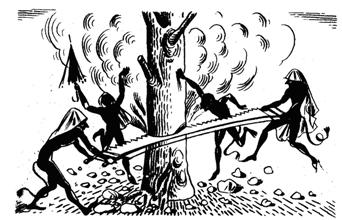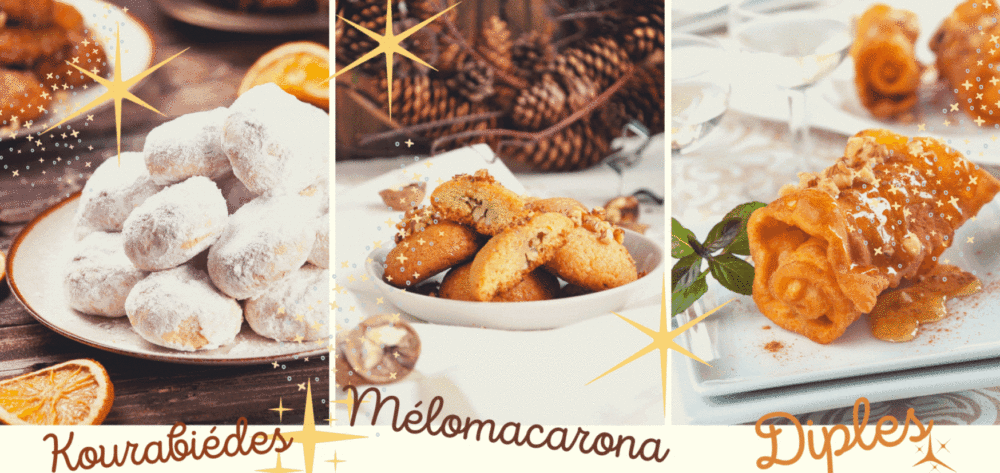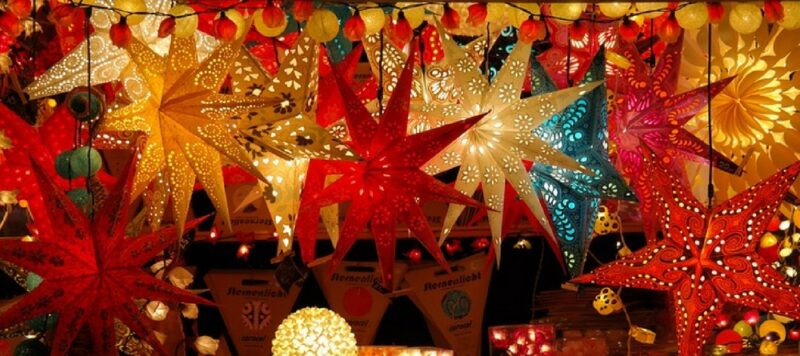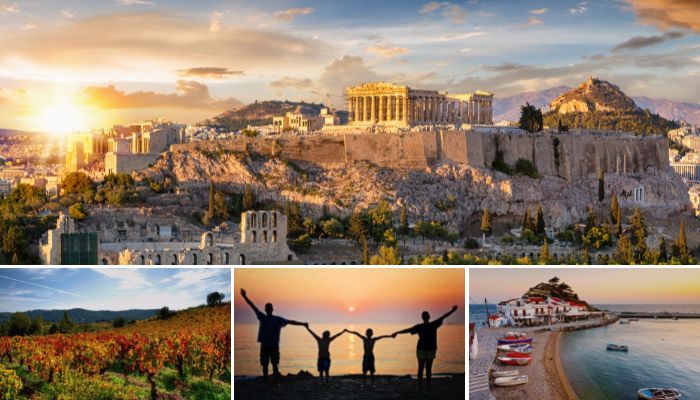Greece is a festive country with many traditions. To better understand them, we’d like to take you on a tour of some of Greece’s Christmas traditions, and of the festive season in general.
When is Christmas Eve in Greece?
The evening of December 24 marks the end of a 40-day fast. So the Greeks make a good meal on Christmas Eve. However, New Year’s Eve is celebrated on the evening of December 31st (at midnight). Santa Claus is then embodied by Saint Basil, and Vassilopita and presents are shared. This tradition dates back to the 4th century, when Saint Basil, then bishop of Caesarea, engaged in a battle against famine. He found a way to distribute the coins to the poor by hiding them in a pita (cake).
Christmas tree or boat

Traditionally, Greeks decorate their homes with boats instead of the famous Christmas tree. Originally, sailors’ families expressed their gratitude for the safe return of their fathers and sons to their homes, and this tradition continues to this day.
The Kalanta: Christmas carols
On Christmas Eve in Greece (December 24, 31 and January 5), children sing Kalanta. These are Greek Christmas carols. Children are usually accompanied by a simple triangle or guitar, and sing either in the street or from house to house. When you open your door, the children will ask: “Na ta poume?” (Shall we say them?). Your answer will be:“Na ta pite” (go ahead and say them).
To reward them, it’s a good idea to offer them a few coins or chocolates. In Athens, numerous choirs sing in the streets of the city center.
Epiphany or Theophania – January 6
The day of the Epiphany in Greece is called Theophania. The day of Jesus’ baptism by Saint John is celebrated more than the Three Wise Men.
During this celebration, the Pope blesses the waters of the sea or river and throws a cross into the water. Daredevil youngsters jump into the water (often very cool in those days) to retrieve the cross. Whoever brings it to the surface is blessed by the Pope, and his feat brings him good luck all year round. This tradition is called Ta Fota.
The Kallikatzaroi (by Evi Sougari)

In popular mythology, the Kallikatzaroi are horrible gnomes who gnaw on the tree on which the Earth stands. They do it so well that by the end of the year, there’s nothing left but a little bark to nibble. The world is in danger of collapsing!
At Christmas, the kallikatzaroi are attracted by the smell of cakes and return to the surface. They find some left for them in front of houses and devour them. Thus satisfied and satiated, they have fun wreaking havoc in the villages. That’s why it’s best not to venture out too much on Christmas Eve, and to stay with your family. In fact, the next day, people noticed the previous night’s damage: open wine jars, nibbled sausages and stolen or overturned objects.
After all the mischief they’ve been up to over the festive period, on Epiphany day, these dreadful Kallikatzaroi return underground to continue their evil work. But now the earth tree has had time to reconstitute itself. Then the world is saved! … until the following year.
Christmas in Greece : culinary traditions

As usual, the Greeks have a great culinary tradition that accompanies Christmas in Greece, especially as Christmas marks the end of a 40-day fast.
- Christmas “cakes “: there are two kinds : melomakarona, a honey-walnut cookie, and kourabiedes, an almond cookie covered in powdered sugar. They’re available in every bakery, but the best way is to make them yourself.
- Christopsomo accompanies the Christmas meal. It takes the form of a round loaf with a Byzantine cross on it. From the month of December, these cakes everywhere! More often than not, the families cook them together, but in big cities, people in a hurry can buy them in any bakery.
- Vassilopita is eaten on the evening of the 31st to celebrate Saint Basil. This is a type of brioche flavored with orange blossom. But there are many variations based on almonds. Inside the vasilopita, a room is hidden. For the sharing, we make as many portions as there are guests, and add four more: one for Christ, one for the Virgin Mary, one for Saint Basil and one for the poor. Whoever discovers the coin will have luck and happiness throughout the year.
Pomegranate, a sign of prosperity and fertility
On New Year’s Day, the tradition is to throw a pomegranate in front of your door after having had it blessed. The pomegranate is a symbol of prosperity, fertility and good luck. You’ll often see them in souvenir stores.
Sophie B.
Updated January 25, 2024




